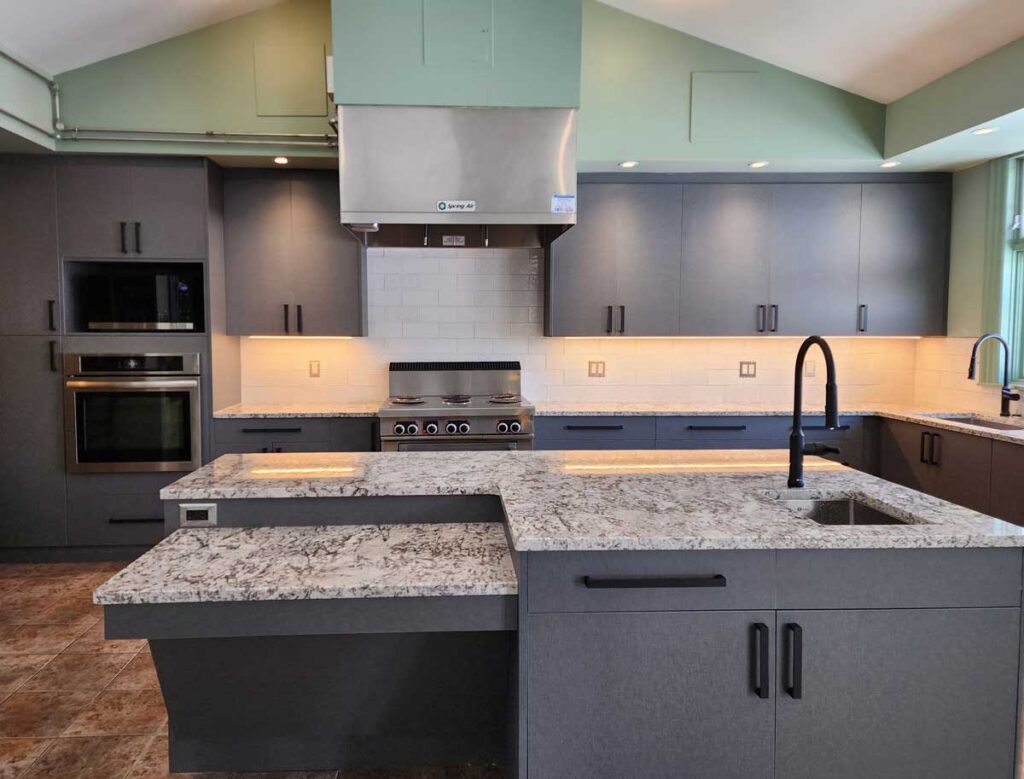
Those in their 30s and 40s with children will drive a meaningful share of future Kitchen & Bath sales.
By Todd Tomalak
If you’re an executive, you should be spending more time thinking about the demographics of women in their 30s and 40s. Despite the challenging macro backdrop, this group is the bright spot to watch for from 2024 to 2030, and will drive a meaningful share of Kitchen & Bath decisions amid the “Golden Age of Remodeling”.
Imagine a customer group that:
- Is on pace to grow an additional 4 million by 2030 (vs 2020)
- Approaching peak earning years
- Statistically predisposed to upgrade luxury Kitchen & Bath products
- Prefer professional designers
That group is women 30-49 years old, arguably one of the most important demographics customer groups to keep an eye on. Why? For the following key reasons:
#1: Growth
By 2030, there will be 4 million more women between the ages of 30-49 than there were in 2020. While the industry debates if there was remodel project “pull forward” during COVID, the demographics are clear: there was absolutely no pull forward in women entering prime years for forming households or homeownership.

#2: ‘Twist in Birth Rates’ to later ages
Birth rates among college educated women in their 30-40’s has surged since 2020, which we suspect will have more impact on the Kitchen & Bath industry than we have seen in prior years.
While overall birth rates have been declining for 60 years, birth rates among women aged 35-44 have jumped 1.8 times higher than 1990 levels, and appear to be accelerating — it’s now +6% higher than 2020 levels.
Compared to younger buyers, a consumer who has a child at 40 is doing so when their income is higher, and upgrade options are more achievable. Women who choose to have children are opting to do so later in life, which happens to be when they have more control over their living situation.
Why does it matter? Because people upgrade more Kitchen & Bath in their home when children enter the picture.
#3: Having Children Changes Consumer Spending
Housing wins, but especially Kitchen & Bath. It’s not surprising that having a child changes how consumers spend their time and money, but the impact on Kitchen & Bath is striking.
First, having a child changes how much is spent on housing overall. According to data from the Bureau of Labor Statistics (BLS), couples with children spend 30 percent more on housing per year than couples without children, even if their incomes are similar*.
For the Kitchen & Bath industry, the effect is even more pronounced. Call it a haven or a refocusing of priorities, but having a child drives households to choose Kitchen & Bath products at higher rates, regardless of what type of homebuyer they are. Home shoppers are willing to give up other features of the home, but the appetite for Kitchen & Bath products remains.
Zonda conducts research on what type of features and upgrades homebuyers choose to pay for, documenting the preferences and choices of over 50,000 shoppers. One clear signal in the data is that female homebuyers with children put a premium on luxury Kitchen & Bath products vs buyers without children. Having a child increases the likelihood that a household will upgrade to premium gourmet appliances, upgrade the cabinets, countertops, and nearly every plumbing feature of the home.
#4: Professionals benefit
According to our data, homebuyers with children are also more likely to trust a trained professional on curation of flooring/cabinets/countertops and other Kitchen & Bath features. Even budget-minded buyers preferred pre-coordinated combinations from professionals that saved them time and still look great. It’s worth noting that by 2030, there will also be +10M additional older women (65+) who will be influencing Kitchen & Bath purchases. If the historical data is any guide, this group was 3 times more likely to hire professionals for their Kitchen & Bath projects than their younger cohorts. It’s a setup for a labor squeeze from 2025 to 2030 related to all matters Kitchen & Bath.
The setup is unique: the pandemic shifted attention to housing, and the industry is slowing. At the same time, in the background something more pronounced is occurring: demographics are shifting. One of the most meaningful demographic groups is reaching the phase of life when housing spending is highest, incomes are near peak, and lifestyle choices are skewing future purchases more towards professional Kitchen & Bath upgrades. We don’t know the exact timing of when these factors will come together, but it appears that very little of their Kitchen & Bath purchases were pulled forward.
It’s all ahead.
*Note- We compare expenditures of couples with/without children to control for the dual earner effect, all from BLS CEX data.
——-
Todd Tomalak is Principal, Advisory of Building Products for Zonda, a research company focused on new residential construction data providing insights and solutions for leaders in the home building industry.























